A water garden opens a new world of planting and landscaping possibilities. You can start small, with a hollow stone that holds rainwater, a watertight, courtyard-sized container, or you can choose an in-ground pond with water lilies, fish, and a fountain. Before building your water garden, you should do homework to decide which size and design are best for you. These gardens can also serve as fishponds or ponds, but it is primarily aquatic plants that make it a water garden.
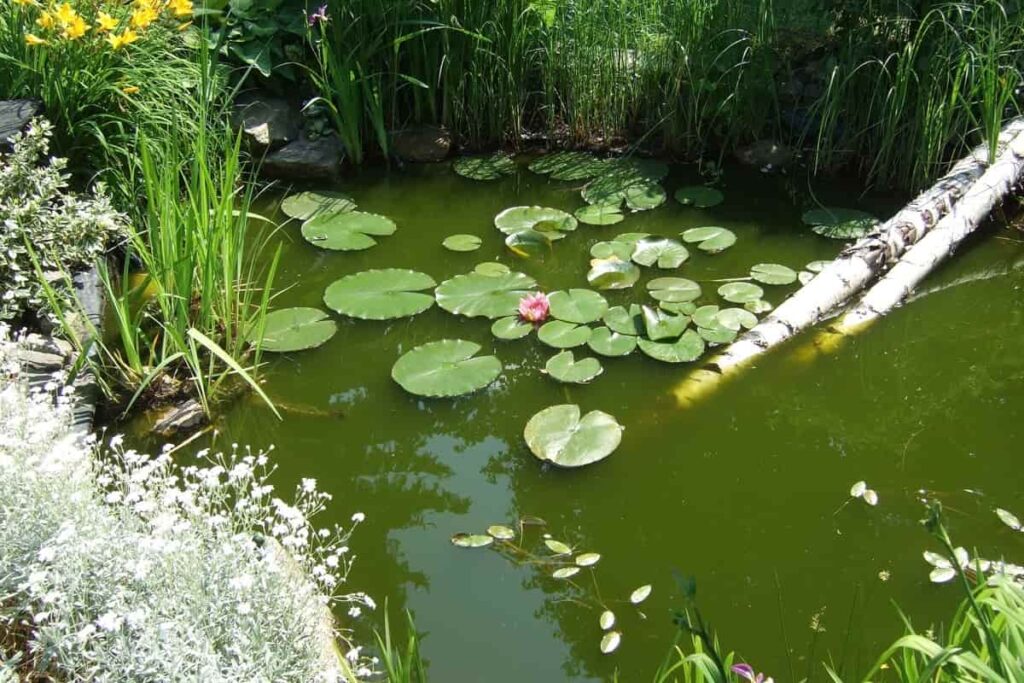
Whether container, shell liner, PVC liner, or grown indoors, water gardens can be of any shape or size and show many different designs. Although deep ones may exist, most water gardens are shallow, as many aquatic plants are sensitive to depth. Your water garden can be a water source for small animals, including birds and squirrels. You may even occasionally see a Frog or Salamander.
How to start a water garden
How to build a water garden
If you’ve DIY skills, yard space, and time, installing an underground water garden makes a great weekend plan.
Choose location
Ideally, your water garden should be in a relatively flat area away from large overhanging trees. The leaves of most hanging trees will fall into your water garden and contaminate the water if not removed regularly. For healthy, thriving plants, you should position the water garden in an area that receives at least 5 to 6 hours per day. A leveled area is excellent, so the water is even, and ideally, the water garden should not be under trees or other plants that will shed too much debris into the water.
Choose size
Remember when deciding on the size that the bigger is better. A simple water garden can be attractive in half a wine or whiskey barrel or any other large container, or more extensive gardens can be full-sized ponds. Smaller options are easier for beginners, although larger gardens may support a greater diversity of plants and fish. The shape of the pond will depend heavily on the effect you want to create. Square, rectangular, round, or oval pools give a formal appearance to the yard, increasing its effect using fountains.
In case you missed it: Gardening Words: Every Beginner Should Know Before Starting a Garden
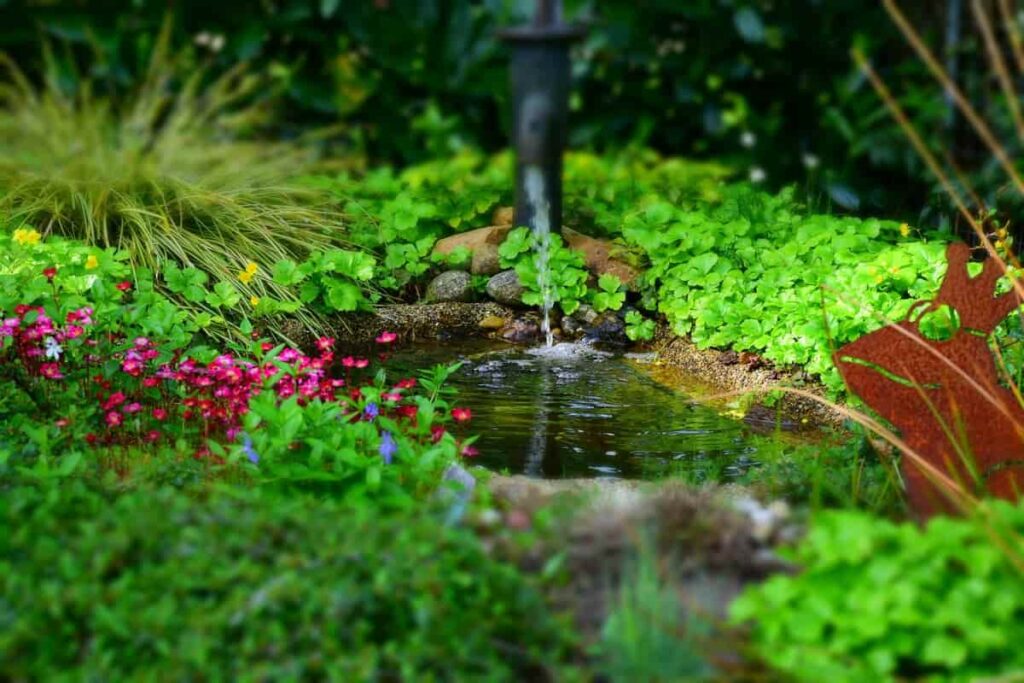
An irregularly shaped pond, perhaps planted with a border of bog plants to further soften its appearance, would be more appropriate. Sometimes rectilinear or circular pools fit perfectly in similar settings. Ponds should not be placed at the bottom of the yard: any overflow can quickly turn the area into a bog. You should make sure there is some possibility for drainage. A yard with a somewhat abrupt slope is best suited if you plan on adding a natural cascade or waterfall.
Plan the depth
Most water gardens should be 18 to 36 inches deep. If you want to fish in your water garden, it must be at least 20 inches deep and 36 if you live in hard frozen areas. The water gardens will have some depth to support shallow and deeper underwater plants. If plants and fish are left in the garden during the winter, the garden must be at least 3 to 4 feet deep at its deepest point.
Install garden
A small container water garden requires little installation in addition to being properly positioned, while larger ponds will require proper filters, pumps, and liners. After all this planning, it’s time to work. Dig the ground to the appropriate depth while maintaining the edges of the area’s surface. You’ll have much dirt left when you dig, so think about where you’ll put it before you start digging. You can make a mound so that your water garden has a high section and create a waterfall. Now you must choose the type of liner you want for your garden.
Many liners include clay-lined concrete, rubber, and fiberglass. You’ll have to consider cost and maintenance. Concrete is expensive and difficult to install, is the main material used in construction. Concrete also requires special care to be used and maintained. With more modern pool lining materials, PVC and fiberglass are currently important, material costs have been greatly reduced, and anyone easily does the installation. Finally comes the edge and coping of your water garden. Then all you must do is add your plants and water.
Add water and plants
After adding water to a pond or container, it should rest for several days to remove chemicals, or enzyme treatments can balance the water’s chemical composition and help neutralize unwanted additives. Plants can be added, including submerged, emergent, and floating plants. About 70% of the water’s surface should be covered with plants. Some best water plant options include Water Lettuce, Water Lilies, Water Hyacinths, parrot feathers, Pennywort, Cabomba, Anacharis, Floating Hearts, irises, Lotus, and Cattails.
In case you missed it: How to Grow Broccoli in Pots in India: at Home, on the Terrace, in the Backyard and Balcony
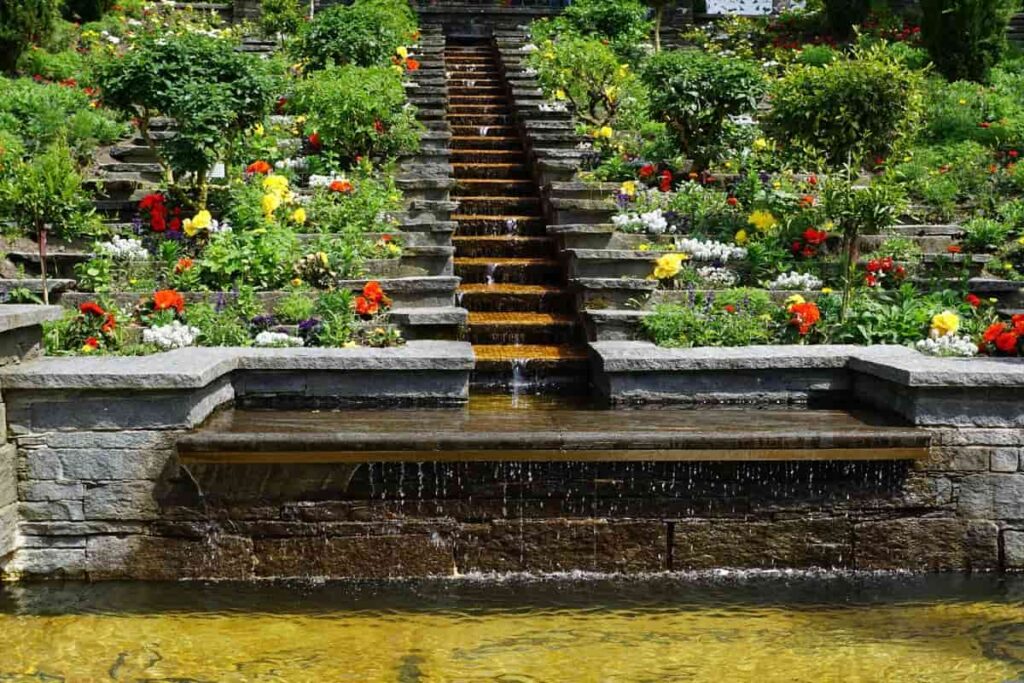
Plant care
Aquatic plants require very little care once established other than removing dead foliage and occasional fertilization almost every 2 to 4 weeks during the summer and less frequently in the winter if the garden is still growing. Plants may need to be thinned occasionally. You should fill water gardens with floating, submerged, and edge plants. However, some water plants are invasive and should only be grown in containers. Reputable garden centers and online sources will sell only approved plants in your state.
- Floating plants absorb dissolved nutrients and shade the water. Some floating plants include Duckweed, American frogbit, Water Hyacinths, Water Lettuce, and Water Lilies.
- Submerged plants spend their entire lives below the water level. These plants get nutrients from water through their stems and leaves and do not require soil or special fertilizer. They compete with algae and help clean your water by using dissolved nutrients.
- Edge plants grow 5 to 10 inches below the water level or in moist soil next to the ponds, providing shelter for fish, frogs, and other plant life. Shelf plants include the Sweet Flag, Canna, Water plantain, Marsh Marigold, Pickerel Rush, Sage, Cattails, and Arrowhead.
Consider fish
Fish can be a fun addition to the water garden and help keep mosquito populations in check. In addition, their wastes are a good source of nutrients for plants. It is important to balance the number and size of fish with the size of the water garden. Goldfish is a better choice for ponds. They usually do not eat plants. Keeping Goldfish and none in outdoor ponds is not legal in all states.
In case you missed it: How to Select Planting Materials for Your Garden: A Beginners Guide
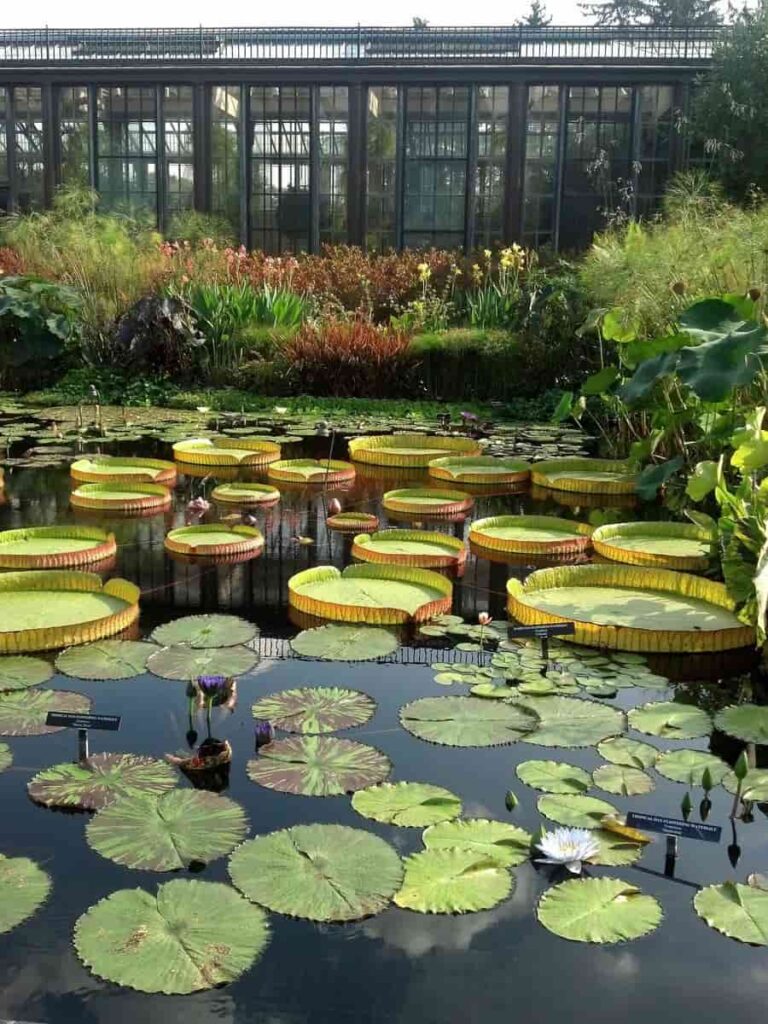
Once your new pond settles in, birds, frogs, toads, snails, and water insects, such as water striders and dragonflies, will begin to appear. Each of these creatures will settle in its favorite habitat, helping to complete the ecosystem. Observe your water garden closely and take precautionary measures to exclude them if you wish. Netting is effective, especially on small ponds and containers. Most water gardens do not require filtration or aeration systems.
To maintain the best quality of water, add the right mix of water plants, remove dead or dying plants regularly, and tolerate water that is not crystal clear. Green water and hairy algae are common early in the season unless other water plants compete with them for nutrients and the sun. If your water garden is stocked with fish, you may need filtration or an aeration system to help clean the water and give oxygen.
How to maintain a water garden
It’s best to take routine care of your water garden for a healthy and balanced ecosystem. Remember that maintenance depends on the design and features of your water garden. A small container water garden will not require as much care as a water garden.
Manage the debris
You should clean leaves, grass clippings, and other debris from the water garden. Keep the skimmer net close so you can collect and remove waste from your water garden.
Encourage plant growth
Add some more if your water garden is less visible on plants (maybe some are dead). Plants are essential for your water garden’s health because they help keep the water clean, add oxygen, and compete with algae.
Remove dead plants
Dead plants can leave toxic in the water garden and contaminate the environment. As soon as you see dead plants, remove them from the water.
Add fertilizer as needed
Depending on the water quality of your garden, fertilize your aquatic plants. If your plants appear in good health and the water quality is fine, you may not need to fertilize your water garden. Now don’t go regularly and throw in soil fertilizer. The same fertilizer you use on vegetable gardens, and flower beds can cause significant damage to aquatic life in your water garden. Only use special fertilizers for aquatic plants or water gardens.
In case you missed it: 14 Best Compost Bins for Home in India: For Indoor, Outdoor, and Kitchen Garden
Why does my water garden attract mosquitoes?
A weakly maintained water garden is a hot spot for mosquitoes. Prevention is the best way to control mosquitoes.
- Limit the growth of algae. Mosquito larvae like to eat this food.
- Keep the water in motion. In stagnant water, Mosquitoes lay eggs. You should increase the flowing water with pumps, water fountains, or waterfalls.
- Add fish to your water garden. If mosquitoes are a major problem or concern, some fish will eat these annoying bugs for you.
What do I do with my water garden during the winter?
After the first hard frost, it’s time to relax in your water garden for the winter. You must remove as much dead plant material and fallen leaves as possible. If you don’t, they’ll rot in the water in the winter and likely kill your fish. If your water garden is deep enough, place the hardy plants in the deepest part. Otherwise, you’ll need to keep them wet and cool in the winter, but don’t let them freeze. Your tropical plants must be removed from your water garden before your first frost. It can be kept wet and cool in the winter or in a sunny window.
If your water garden is deep enough over winter hardy plants, the Goldfish will also remain fine in the winter. On the other hand, no one survives long, cold winters so easily. They will need to be brought indoors and kept in a large aquarium until warm weather returns, or extra attention will be needed to ensure that the pond is always open. A partial change of water in spring can also improve their chances of survival. You’ll need to keep an area ice-free so that gas can be exchanged. Otherwise, your fish will suffocate.
In case you missed it: How to Propagate Aloe Vera: Without Roots, Leaves, Cuttings on the Ground and in the Water
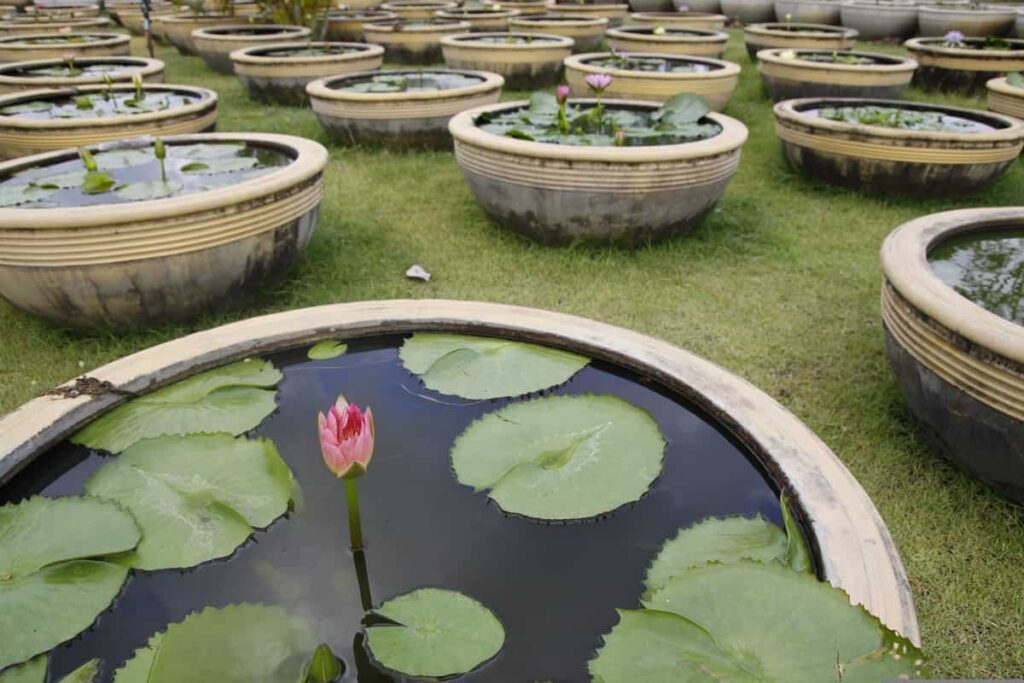
Conclusion
Once established, a water garden can be much easier than a traditional one. Water gardens use a pool of water and are filled with aquatic plants instead of flowers or vegetables. The water gardens do not wilt, they do not need any weeds, and the plants will not grow beyond their designated container and occupy other yard areas. A well-designed water garden can be a pleasantly easy addition to any backyard.
- How to Grow Tomatoes Organically at Home: A Comprehensive Guide
- Organic Gardening on a Budget: Low-Cost Methods and Materials
- Gongura Seed Germination and Planting Methods
- Cabbage Seed Germination and Selection
- Broccoli Seed Germination and Selection
- Asparagus Seed Germination and Variety Selection
- Seasonal Flower Gardening: Best Practices for Spring, Summer, Fall, and Winter
- How to Grow Hibiscus from Flower
- Plantation Ideas for Home Decoration: A Beginners Guide
- Flower Garden Designs and Layouts for Beginners
- Planting and Spacing Techniques in Papaya: A Beginner’s Guide
- Growing Gold: Essential Techniques for Planting Pineapples
- How to Make Kalanchoe Plant Bushy: Home Remedies and Solutions
- 11 Reasons Why Your Gardenia is Not Blooming: Home Remedies and Solutions
- Eco Elegance: The Guide to Designing a Drought-Tolerant Landscape
- Gardening on a Slope: Strategies for Hillside Landscaping
- Nourish and Flourish: Top Organic Mulches for Thriving House Plants
- Everything You Want to Know about Indian Mogra Flower: Discover Uses and Growing
- Green Thumb Success: Expert Tips for Cultivating Greenhouse Pumpkins All Year Round
- Maximize Growth & Flavor: The Ultimate Guide to Companion Planting in Herb Gardens
- How to Control Rhododendron Problems Naturally: Home Remedies and Organic Ways to Fix Them
- Natural Magic: The Remarkable Benefits of Cinnamon for Plants
- Best Steps to Revive Dying Tulip with Natural and Organic Treatment
- 10 Reasons Why Your Angel Trumpet is Not Blooming: Remedies and Treatment
- How to Fix Periwinkle Leaf and Flower-Related Problems: Natural Remedies and Solutions
- How to Fix Zinnias Leaf and Flower Problems: Discover Natural and Home Remedies
- Organic Steps to Induce Lemon Tree Flowers: A Comprehensive Guide
- Bloom Booster: Crafting the Perfect Homemade Bougainvillea Fertilizer
- Optimizing Growth: A Guide to Applying NPK Fertilizer for Potted Plants
- 10 Best Homemade Fertilizers for Rubber Plant: DIY Recipes and Application Method
- How to Boost Female Pumpkin Flowers: Effective Steps for More Flowers and High Yields
- Transform Your Indoor Garden: Top Benefits of Pink Salt for Houseplants
- 10 Best Homemade Fertilizers for Peacock Plants (Calathea): Easy DIY Guide
- Unlock Blooms: 9 Reasons Why Your Potted Chrysanthemum is Not Blooming
- 8 Reasons Why Your Potted Hibiscus is Not Blooming: Fix it with Simple Solutions
- Unlock Blooms: 9 Key Reasons Your Potted Frangipani Won’t Flower
